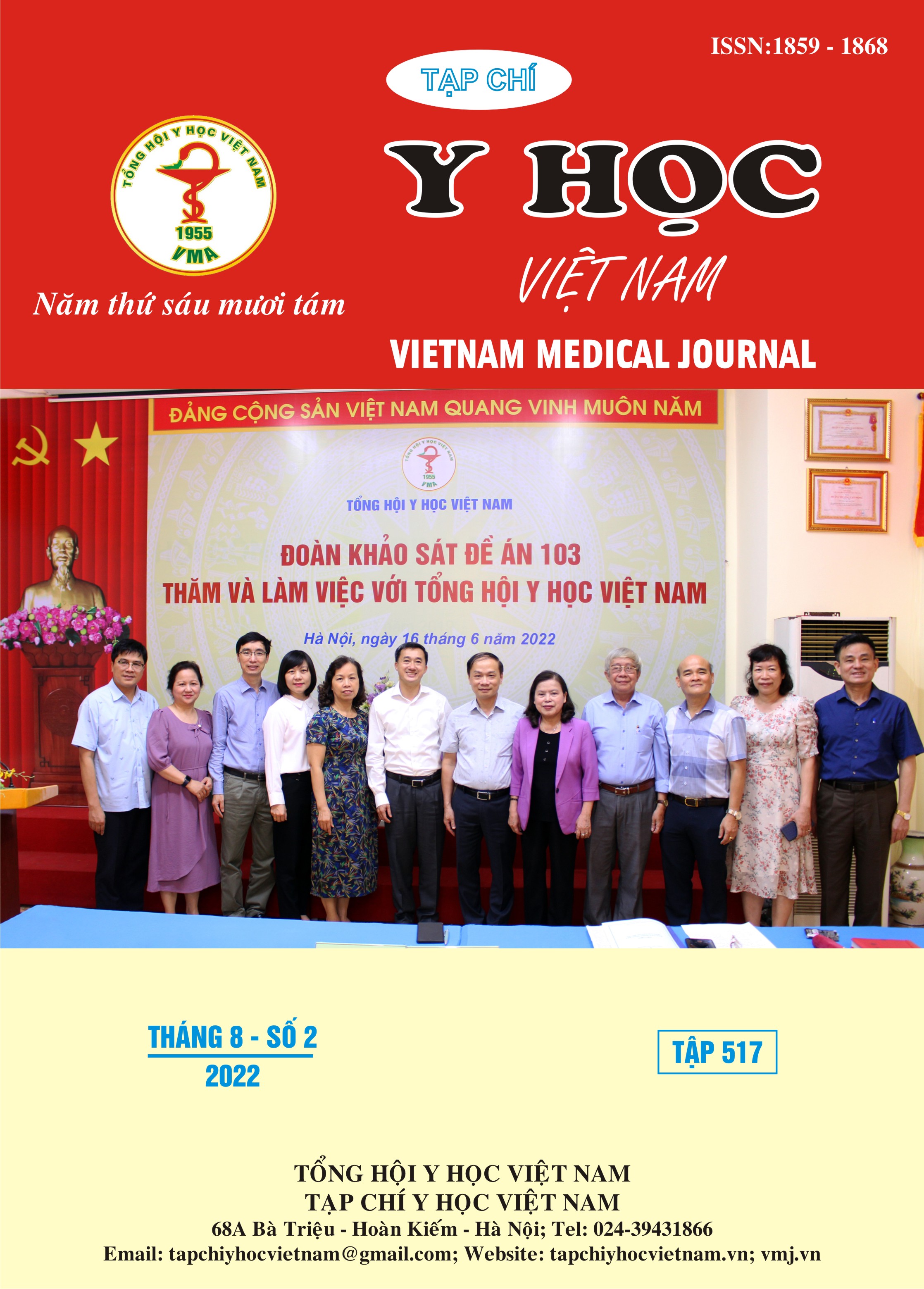EFFECTIVENESS OF LEVOBUPIVACAIN COMBINED FENTANYL IN AXILLARY PLEXUS BLOCK POSTOPERATION
Main Article Content
Abstract
Objectives: To evaluate the effectiveness of analgesia, motor inhibition, and postoperative analgesia of axillary plexus anesthesia with levobupivacaine in combination with fentanyl. Subjects and methods: A cross-sectional descriptive study with a control group on 100 patients with indications for surgery from the lower third of the arm to the lower finger under anesthesia of the axillary plexus at Military Hospital 175 from January 2021 to May 2022. Results: The potential duration of pain inhibition in group I was significantly lower than in group II. The duration of pain suppression and postoperative analgesia in group I were significantly higher than in group II. The potential duration of motor inhibition was significantly lower in group I than in group II. The duration of the motor blockade effect in group I was statistically significantly higher than in group II. The rate of good anesthesia quality in group I was 90%, higher than in group II (88%). The difference has not been statistically significant. The relationship between age, gender, ASA status and the time of sensory inhibition, the time of motor inhibition was unknown. Conclusion: The effect of analgesia, motor inhibition and pain relief of the levobupivacain-adrenalin-fentanyl group was higher than that of the group using levobupivacain-adrenalin alone.
Article Details
Keywords
levobupivacain-fentanyl, axillary plexus block
References
2. Mengesha Dessie Allene, Agmuas Asichale Alimawu, Semagn Mekonen Abate, et al. (2020). The effectiveness of adding tramadol versus fentanyl as an adjuvant to bupivacaine on brachial plexus block: A double blind, randomized controlled trial24: 85-90.
3. Nguyễn Văn Trí, Nguyễn Thị Bạch Yến, Nguyễn Văn Quyền, et al. (2020). Đánh giá một số yếu tố tương quan ảnh hưởng đến gây tê đám rối thần kinh cánh tay trong phẫu thuật chi trên. Tạp chí y học lâm sàng, 60: 23-30.
4. Fawzy Abbas Hala Mahmoud, Mahmoud Gamal El-Din Youssef et al (2020). “Comparison between Levobupivacaine Alone and Levobupivacaine with Fentanyl in Extending the Duration and Postoperative Analgesia of Supraclavicular Brachial Plexus Block for Elective Upper Limb Orthopedic Surgeries. The Egyptian Journal of Hospital Medicine, 81(2).
5. Mengesha Dessie Allene, Agmuas Asichale Alimawu, Semagn Mekonen Abate, et al. (2020). The effectiveness of adding tramadol versus fentanyl as an adjuvant to bupivacaine on brachial plexus block: A double blind, randomized controlled trial. International Journal of Surgery Open, 24: 85-90.
6. Jadranka pavičić šarić, jelena zenko, vanja vončina, et al. (2015). Effects of age on onset time and duration of sensory blockade in ultrasound guided supraclavicular block Abstract117 (2): 287-290.
7. Sükran Geze, Hülya Ulusoy, Engin Ertürk, et al. (2012). Comparison of Local Anesthetic Mixtures with Tramadol or Fentanyl for Axillary Plexus Block in Orthopaedic Upper Extremity Surgery9(2).
8. Xavier Paqueron, Gilles Boccara, Mouhssine Bendahou, et al. (2002). Brachial plexus nerve block exhibits prolonged duration in the elderly97(5): 1245-1249.
9. Phạm Văn Quỳnh, Trịnh Xuân Trường, Hoàng Văn Chương, et al. (2014). Nghiên cứu gây tê đám rối thần kinh cánh tay đường gian cơ bậc thang bằng Lindocain phối hợp với Dexamethason trong phẫu thuật chi trên Y học thực hành, 905(2): 6-9.
10. Nguyễn Trung Nhân (2020), Hiệu quả gây tê đám rối cánh tay đường dưới đòn với Bupivacain liều thấp trong phẫu thuật cẳng tay. Đề tài nghiên cứu cấp cơ sở.


